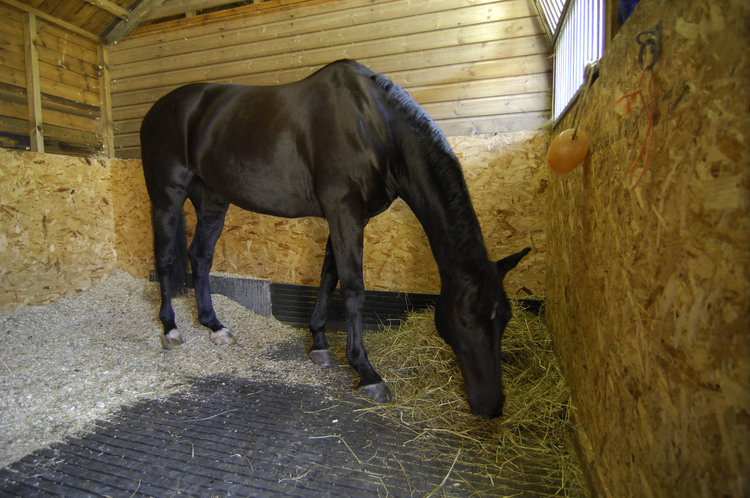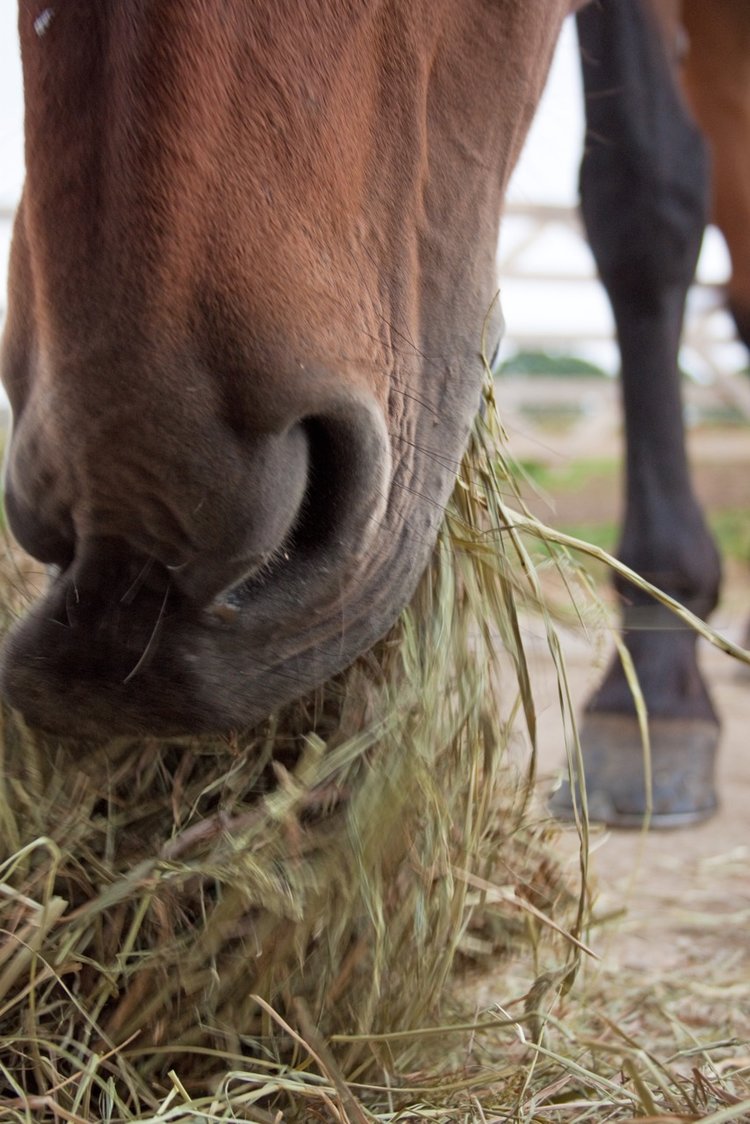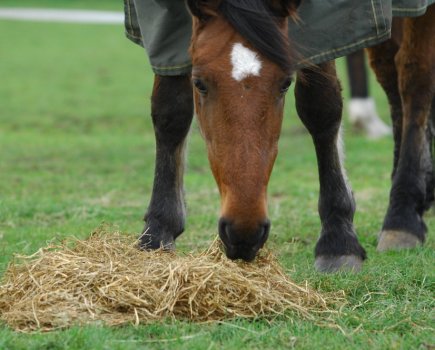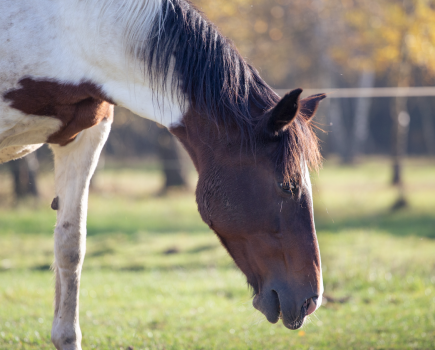The wind, rain and plummeting temperatures all make winter a pretty undesirable season if you’re a horse owner and knowing what’s best for your four-legged friend can be a real challenge. Read our simple guide to help you make the best choice for your horse this winter.
Feeding a good doer
If you have a good doer, the winter provides an ideal opportunity to get some weight off your horse before the grass grows again in the spring. Remember that you should be able to lightly run your hand over your horse and feel his ribs, but not be able to see them.
While he may be able to live quite happily off fresh air (or so it seems) all year round, the nutritional content of the grass is lower in winter and you might want to consider feeding a vitamin and mineral supplement (rather than giving him cubes or mixes). This will ensure he gets all the nutrients he needs to maintain good health, without consuming too many calories.
Make the most of chewing
If you bring your horse in at night during the winter, it’s important to give him plenty to eat. Horses are ‘trickle feeders’ meaning they eat little and often and should never be starved. Their stomach is continually producing acid (unlike human stomachs that only produce it when we eat) and it’s important to neutralise this acidic environment to protect against problems like gastric ulcers.
Chewing produces saliva and the saliva neutralises acid in the stomach, so for good doers, it’s important to maximise his chewing time. Feeding course hay in haynets with small holes will help to do this.
If you’re concerned that feeding a constant supply of hay will lead to weight gain, opt for late cut hay as it’s likely to contain fewer calories and soak it for up to 12 hours. Bear in mind that soaking hay can change the taste quite dramatically, so try and build this up gradually (for example, start off only soaking for an hour, then three hours and so on). Soaking hay reduces calorie intake by up to 80%, but can take out some nutrients. For this reason, you might want to consider feeding a balancer to make sure he’s getting all the vitamins he needs.
 Feeding a poor doer
Feeding a poor doer
Winter can be a particularly challenging time for those horses who struggle to keep weight on. The key is to avoid weight loss in the first place, so making sure he’s warm and providing good quality ad lib forage is a good place to start.
It can be tempting to give your horse one big meal a day and increase the size of his ration, but this won’t necessarily help him to gain or maintain his weight. Horses have small stomachs (roughly the size of a rugby ball), so feeding large meals (anything more than a scoop for an average 500-600kg horse) can mean that the food goes through his digestive system too quickly. This means that not enough nutrients are absorbed and the goodness in his food will simply end up in his droppings. To make sure you’re feeding your horse (rather than the floor) give his ration in small meals throughout the day, rather than in one big one when you bring him in at night.
Another thing to consider for poor doers is the energy content of the feed they’re having. All of this information will be included on the back of a feed packet. Rather than feeding more of a low energy feed, it could be that you need to go up the next energy level and feed your horse a more energy-dense meal.
Adding oil to his dinner can be another effective way to promote weight gain as oils provide a concentrated source of calories and slow release of energy. Not all oils are equal in their nutritional content, so ensure that you feed according to the manufacturers guidelines. It’s also wise to introduce oil gradually, so as not to upset his stomach.
Remember to rug him to limit the amount of energy he has to use keeping warm. If he’s living out, make sure he’s got a field shelter and tall, thick hedges to act as a windbreak.









